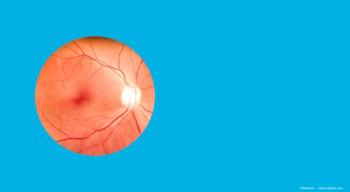
ARVO LIVE: Lamina cribrosa pressure and predicting structural glaucoma progression
Ophthalmology Times® talked with Ronald Zambrano, lab supervisor for the advanced Ophthalmic Imaging Lab at NYU Langone about lamina cribrosa pressure and predicting structural glaucoma progression at this year's ARVO meeting.
Ophthalmology Times® talked with Ronald Zambrano, lab supervisor for the advanced Ophthalmic Imaging Lab at NYU Langone about lamina cribrosa pressure and predicting structural glaucoma progression at this year's ARVO meeting.
Video transcript
Editor’s note: Transcript lightly edited for clarity.
Ronald Zambrano:
My name is Ronald Zambrano, and I'm the lab supervisor for the advanced Ophthalmic Imaging Lab at NYU Langone.
I'm here at ARVO imaging presenting a poster titled, "Can lamina cribrosa pressure challenge predict structural glaucoma progression?" So in our study, what we did is, designed an acute pressure challenge where we increase the IOP while imaging the lamina cribrosa with swept source OCT prototype. So what we tried to do is see if the changes in the lamina cribrosa resulting from this acute pressure challenge would be associated with glaucoma progression over time.
The idea behind this is that the lamina cribrosa, which is a collagenous meshwork, on which the axons of the retina pass through, would be affected by this change in IOP, and subsequent strain on the axons. So, the theory is that the eyes, which underwent the most changes during this pressure challenge, would also result in the most structural progression over time.
So, what we did was we followed 17 glaucoma and glaucoma suspects over an average of 4 1/2 years, and we looked at their images that they had during their clinical visits with spectral domain OCT, and what we did was, upon the end of the study, we did linear regression analysis on these individuals. And we saw that they actually, the eyes which had the most changes in the lamina cribrosa, during this pressure challenge, also had the most structural thinning in the ganglion cell layer and the GCIPL.
So this was pretty interesting finding because it's actually the first time that we've been able to see an association between changes in the lamina and changes in the retina. And this is also interesting because there currently is no way that we know of that we can predict future glaucoma progression.
And so, the idea is that maybe clinicians can use this test, and it'll help indicate the type of treatment that these patients could receive. Whether somebody is likely to progress or not progress could indicate whether they should receive more or less treatment.
So it's a pretty exciting finding that we're hoping to expand upon, and hopefully this will be another biomarker for glaucoma that will eventually help us diagnose the disease and help preserve vision and prevent blindness.
Newsletter
Don’t miss out—get Ophthalmology Times updates on the latest clinical advancements and expert interviews, straight to your inbox.


















































.png)


